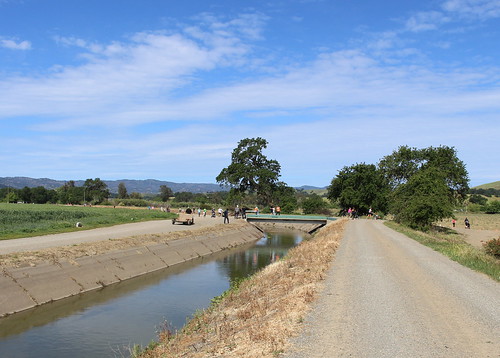From the Fields - Thaddeus
California is a beautiful state. In the south, its days are forever sunny, moving north we find the south end of the Central Valley that is blessed with a near year-round growing season. As we reach the beginning of Northern California, the Salinas Valley, we find temperate weather that is ideal for growing vegetables for only nine months of the year. Near Sacramento, the summer days are explosive and perfect for hot-weather, summer crops, and it doesn’t cool off enough for vegetables until fall and then it is too cold for many things through the winter. North of Sacramento exists a mighty chunk of our state, filled with mountains and natural resources, but shy of any significant population.
These places are connected by many things including a water system that captures snow melt in the north and delivers it down the Sacramento River to the delta where man-made canals pump rivers that run uphill to deliver water to farms cities. The reality of the water situation for farms is completely dependent upon wherein the state they exist. I have the pleasure to run our farm and work with our partner farms throughout the state and the topic of water always comes up.
The main source of water for farms south of Sacramento is delivered through the California Aqueduct. The supply for this source of water is the snow capture in Northern California. When that snow melts, it’s stored in reservoirs and then moved to farms. Farms that are dependent on this water are in big trouble. Our farm is not dependent upon this water. In addition to this water source, there are a series of local water projects throughout the state. Our farm in Yolo County uses rain water that is captured in Clear Lake. Last year, the canal was dry, but this year, we received enough water that our canal will be open. Our partner farm in the desert (southeast corner of California) gets their water from the Colorado River; they too have enough water.
After surface water options, we look at groundwater. In general, the more sunny days the area has, the less available groundwater there is. Farms from Salinas north, generally have a healthy availability of groundwater to draw from, however with a lack of other water sources the groundwater gets hit pretty hard. Farms in the southern part of the state generally don’t have the same groundwater options. Our farm in Fillmore has a well, but the water is very deep down and saltier that what is ideal.
The spot in the state that has been hit the hardest is the west side of the Central Valley, an area that had no agriculture until the State Water Project ran water to it and now that water is gone. They are really hurting. Groundwater in this area is hard to find, and the wells needed to get it are really deep and often the water is so salty it is of little value to crops.
Our farm and partner farms are doing okay for water, but we have all had to sit some acres out and adjust our crop selections. The nightmare for us will be if one of our groundwater wells goes dry this summer. Our focus will be using the water we have efficiently, which means matching water application rates to the rate at which crops will be using the water and focusing on really efficient application method which are drip irrigation methods, eliminating any leaks in the system and applying a thin layer of plastic mulch when possible to eliminate evaporation.
